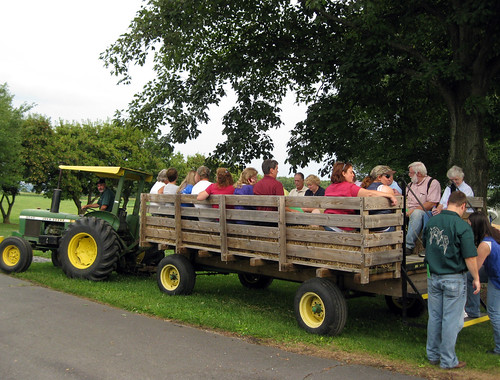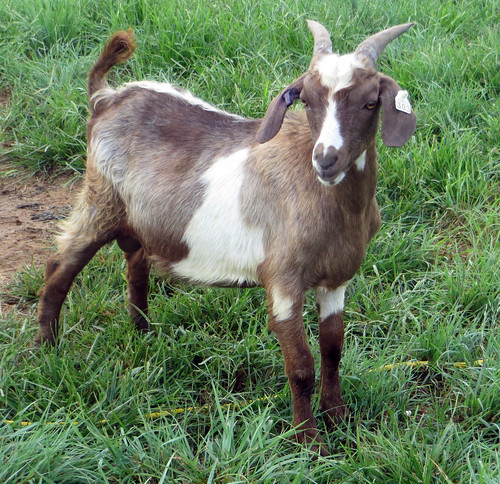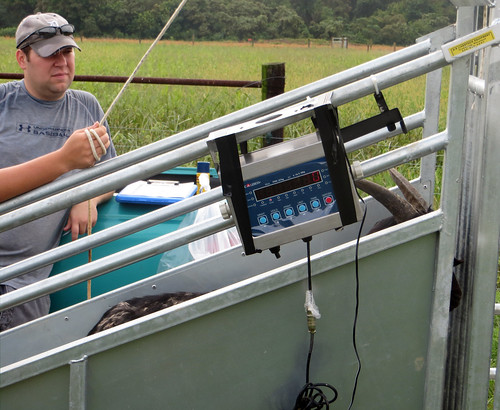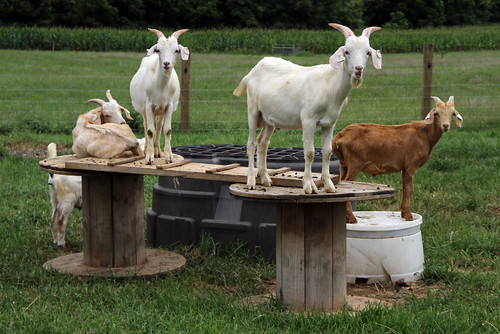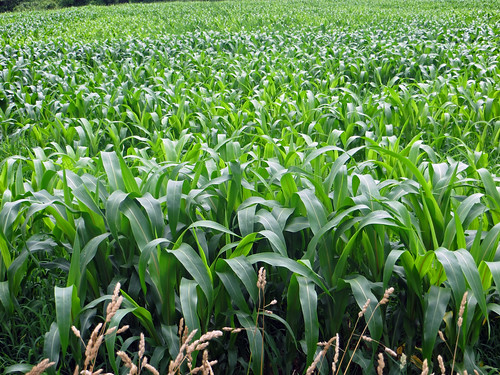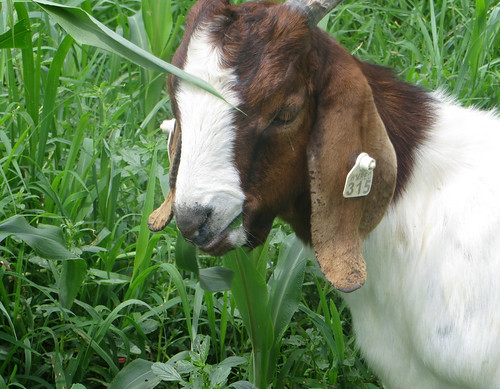The goats were scanned on August 21 to determine rib eye area (REA), loin depth, and rib fat. The scanning was done by Jim Pritchard from West Virginia University. The scans were interpreted by the National CUP Lab & Technology Center in Ames, Iowa.
On the day the goats were scanned, they (n=75) ranged in weight from 29.6 to 80.4 lbs. and averaged 51.1 lbs. The median weight was 50.2 lbs. (22.8 kg). Rib eye area ranged from 0.33 to 1.32 square inches and averaged 0.81 + 0.22 inches. The median rib eye area was 0.77 square inches (5 square centimeters).
Loin depth ranged from 0.34 to 0.84 inches and averaged 0.57 + 0.11 inches. The median loin depth was 0.75 inches (1.9 cm). Rib fat ranged from 0.02 to 0.09 inches and averaged 0.05 + 0.02 inches. The median rib fat was 0.05 inches (1.3 mm).
On-average, heavier goats will have larger rib eye areas. Thus, it makes sense to compare the data from goats of similar weights. The test goats were divided into four weight groups: less than 40 lbs. 40-49 lbs., 50-59 lbs. and 60 lbs. and over. An average rib eye area was determined for each weight group. A ratio was calculated for each buck.
A ratio above 100 means than a buck is superior to the bucks in its weight class. Conversely, a buck with a ratio below 100 is inferior to the bucks in its weight class. For example, a buck with a ratio of 110 has a rib eye that is 10 percent larger than the average buck in his weight class.
In this year's test, the buck with the highest ratio for rib eye area is #348 (Nelson, MD). On August 21, this Kiko x Spanish buck weighed 45.6 lbs. His rib eye measured 1.18 square inches. The average rib eye area for bucks weighing between 40 and 49 lbs. was 0.74 square inches, giving #348 a ratio of 159 percent.
Other bucks with high ratios for rib eye area include #301, 139% (Loos, IL); #321, 147% (Burke, DE); #339, 135% (Murphy, NJ); #353, 131% (Pinneo, KS); and #361, 138% (Richhart, IN).
The buck with the largest rib eye is #304 (Adams, IL). This buck weighed 60.4 lbs. on August 21. His rib eye measured 1.32 square inches. His ratio was 127 percent.
Download ultrasound report
On the day the goats were scanned, they (n=75) ranged in weight from 29.6 to 80.4 lbs. and averaged 51.1 lbs. The median weight was 50.2 lbs. (22.8 kg). Rib eye area ranged from 0.33 to 1.32 square inches and averaged 0.81 + 0.22 inches. The median rib eye area was 0.77 square inches (5 square centimeters).
Loin depth ranged from 0.34 to 0.84 inches and averaged 0.57 + 0.11 inches. The median loin depth was 0.75 inches (1.9 cm). Rib fat ranged from 0.02 to 0.09 inches and averaged 0.05 + 0.02 inches. The median rib fat was 0.05 inches (1.3 mm).
On-average, heavier goats will have larger rib eye areas. Thus, it makes sense to compare the data from goats of similar weights. The test goats were divided into four weight groups: less than 40 lbs. 40-49 lbs., 50-59 lbs. and 60 lbs. and over. An average rib eye area was determined for each weight group. A ratio was calculated for each buck.
A ratio above 100 means than a buck is superior to the bucks in its weight class. Conversely, a buck with a ratio below 100 is inferior to the bucks in its weight class. For example, a buck with a ratio of 110 has a rib eye that is 10 percent larger than the average buck in his weight class.
In this year's test, the buck with the highest ratio for rib eye area is #348 (Nelson, MD). On August 21, this Kiko x Spanish buck weighed 45.6 lbs. His rib eye measured 1.18 square inches. The average rib eye area for bucks weighing between 40 and 49 lbs. was 0.74 square inches, giving #348 a ratio of 159 percent.
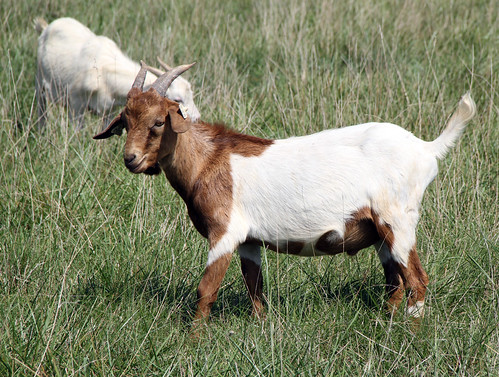 |
| Buck with highest ratio for REA (#348) |
Other bucks with high ratios for rib eye area include #301, 139% (Loos, IL); #321, 147% (Burke, DE); #339, 135% (Murphy, NJ); #353, 131% (Pinneo, KS); and #361, 138% (Richhart, IN).
The buck with the largest rib eye is #304 (Adams, IL). This buck weighed 60.4 lbs. on August 21. His rib eye measured 1.32 square inches. His ratio was 127 percent.
Download ultrasound report








